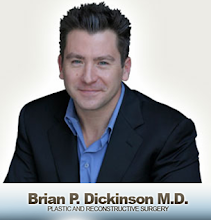

Facial trauma and facial fractures are surgical procedures I enjoy, as I find the anatomy fascinating and I enjoy continually trying to improve ways in which to conceal scars. The one aspect that I appreciate the most about my profession, are cards or testimonials that I receive from patients or their family members.
This nice family member writes:
"I want to thank you for your kindness, generosity and most of all for taking care of my brother this past week.
Having unexpected surgery is always a little unsettling, but your demeanor, dedication, and expertise made my family and I feel very comfortable and confident in you. Right from the start we knew we were in great hands.
We will be forever thankful to you and there will always be a piece in our hearts that will remind us of you very fondly.
Thank You. Thank You. Thank You"
Cards such as these are one of the highest compliments that I could ever receive and I am truly touched.
As my career advances, I find more similarity between reconstructive and aesthetic surgery. Both disciplines require a well thought out operative plan, a thorough knowledge of the anatomy, and conscientious and careful patient follow-up. I am very thankful to have had excellent training.
Brian P. Dickinson, M.D.








